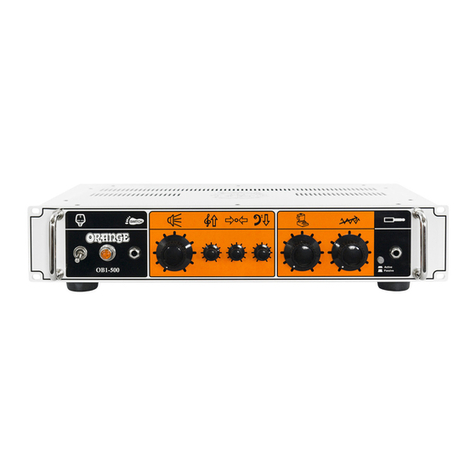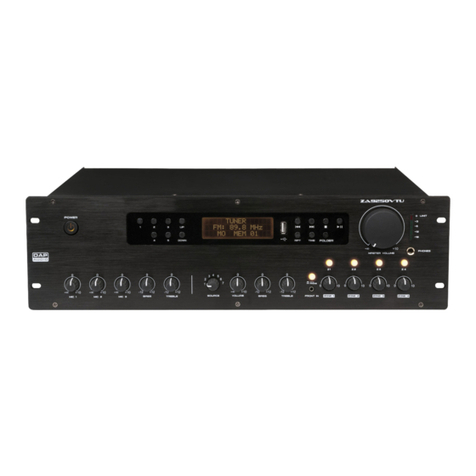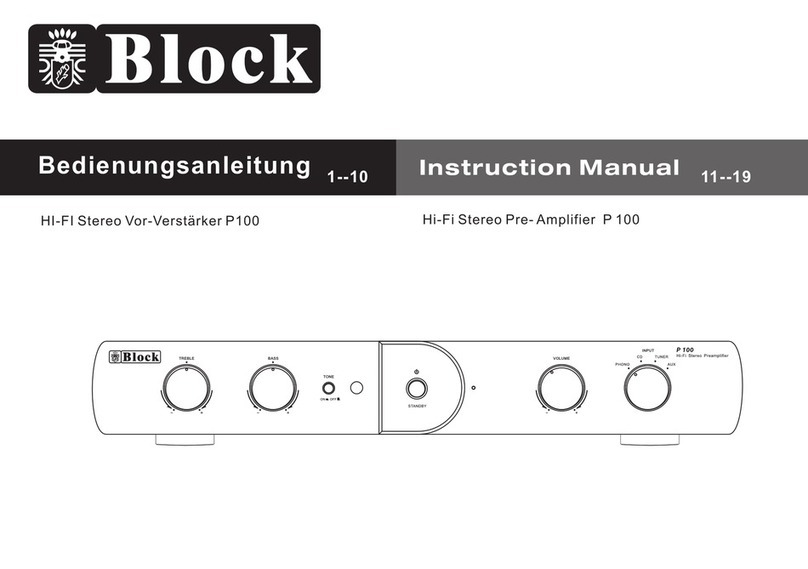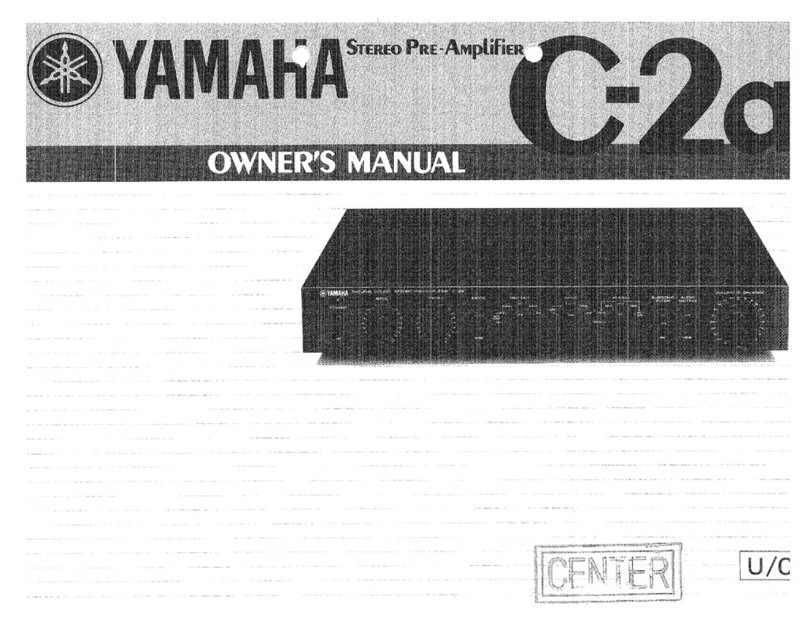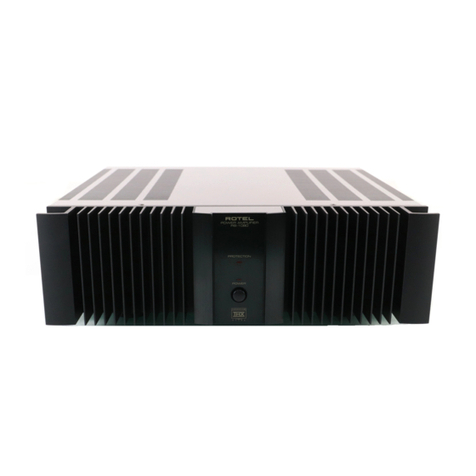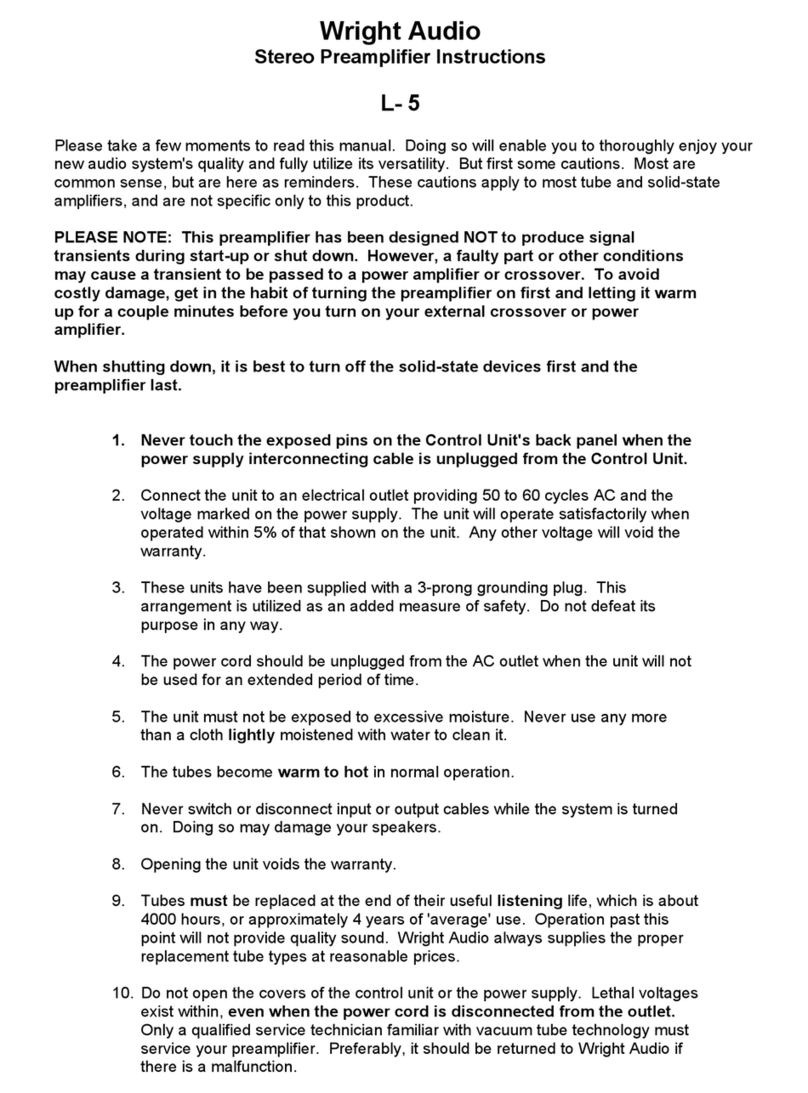DIVO OV4 OPERATION
At power-on the OV4 performs a self-calibration routine (indicated by the fault indicator LEDs
flashing). This prevents damage to valves due to a process known as ‘cathode stripping’ The OV4 also
checks for faulty valves during this period, under these circumstances, the fault indication and
handling system will be instigated.
After calibration, a check is performed to see if the ‘standby’ switch is open or closed. In the event
that the switch is open, the system does not attempt to re-bias the amp and will restore the last
known working value of grid bias voltage for the amplifier. It will not re-bias the amplifier until the
first ‘silent’ period, when corrective biasing will take place.
There are two bias settings on the OV4, standard and custom. The default factory settings are:
Standard: 35mA (no drop back bias feature)
Custom: 35mA with a drop back to 20mA when no audio has been detected for 2 minutes.
Custom values may be changed by an authorised Orange service point.
The OV4 has two biasing modes during normal operation, namely, when audio is present, i.e., when
the amp is being ‘played’; the second is when no audio is present for Example, during an interval
period. When the OV4 detects that the amp has not been played for a pre-set time, it automatically
switches between the two biasing modes, for example, to drop back to a lower bias setting when it is
not being played, thereby reducing power consumption, heat generation and extending valve life,
whilst eliminating the possibility of valve cathode poisoning.
The currents are continuously measured and ‘micro’ adjustments made if necessary to this value,
every time there is no audio signal present for longer than approximately 2 seconds. This ensures an
almost perfect balance even when valves are hot / leaky etc.






























